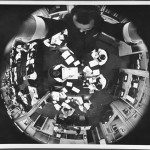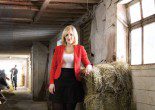Extreme Makeover: Office Edition
Long gone are the days when cigarette butts and cluttered desks shaped a newsroom. How modern design influences storytelling—and puts digital first
As winter turned to spring in 2014, journalists at The Hamilton Spectator worked to the sound of contractors drilling through concrete floors and reconfiguring the wiring. The “banana cream” yellow on the walls soon became grey and indigo blue, the Spec’s corporate colours. The paper moved the curved desks to create pods of four and six. The city and web desks took over the middle of the newsroom, with the general assignment, business and entertainment desks on one side and production on the other. And, glowing at the centre of it all, a Chartbeat monitor: a 40-inch television screen turned sideways to display the paper’s online analytics.
The new floor plan fosters creative conversations and connectivity. No matter which direction reporters walk through the newsroom, the digital team is within reach. The redesign—the paper’s most drastic in 20 years—emphasizes digital journalism. “It might have been at the centre in our hearts and minds,” says managing editor Jim Poling, “but it wasn’t at the centre physically—now, it’s physically there.”
As the industry changed over the last decade, many papers strategically rethought their newsroom space. The Toronto Sun and The Globe and Mail are both moving to new office buildings this year: the Sun to the new Postmedia building, and the Globe to a new building. Even papers that haven’t moved to new buildings, including the Spec and the Winnipeg Free Press, have undergone redesign. These Canadian newspapers are harnessing the newsroom’s potential as a storytelling tool for efficient, digital-minded journalism—an industry’s eagerness to adapt and improve, physically manifested.
Back in 1989, the Sun newsroom was a mess of paper piles and desks crammed together. Typewriters were stacked on top of filing cabinets in the wake of computerization. James Wallace sat beside Sun legend Bob MacDonald, whose ashtray was always overflowing with cigarette butts amidst mountains of paper. These newsrooms had a more colourful personality, says Wallace, now the vice president, editorial for Sun newspapers. But that smoky, papery geography has become a thing of the past.
The new landscape is an open sea of screens with a focus on how information flows from department to department. As the Free Press’s publisher, Bob Cox will sometimes pass a story idea on to an editor, who will pass it on to the city editors, and on it goes until it reaches the reporter. By the end of that line of transmission, the idea has sometimes changed considerably. This problem can be circumvented in part by the physical path these ideas take. At the Free Press, the editors, including copy editors, work in the centre of the newsroom, surrounded by the other departments in pods or clusters. Content is centrally gathered, stories are edited and then it flows out into web or print platforms.
At the Sun, the once-separate sports and general news reporters are now about 10 feet away from each other. The Toronto and Ottawa papers’ production staff are in the same area, cheek-by-jowl. To keep up with journalism going digital, the Sun also built a photo studio with broadcast lighting to do video hits and some sports coverage. Similar to the Spec’s current newsroom, the new Sun office will put the web team close to the national and local news desks, and will have a Chartbeat monitor.
Annick Mitchell, an interior design professor at Ryerson University, says a newsroom should promote and support journalistic creativity. In her experience, people are not creative in isolation or solitude, which makes collaborative spaces a crucial consideration for newspapers. The Spectator chose to put the web team in the middle to secure its place as a priority in the story process. Poling’s office is right across from the digital desks, where he can hear conversations and also jump in with his thoughts. That kind of openness, which invites collaboration, extends throughout the newsroom. Poling, who finds that some of the best ideas and stories arise from informal conversations at the heart of the newsroom, compares it to a natural news amphitheatre: “Like a big, digital whiteboard in the middle of the room.” Even the Spec’s formal news meetings take place in the open, and everyone is invited to gather around the glassy black table or listen in from his or her desk.
But Canadian papers haven’t had much structural redesign of their office spaces in comparison to papers such as The Guardian and The New York Times. Cox says that’s a result of a lack of investment. The Times had a brand new building designed from the ground up in 2007. The focus at Canadian papers has mostly been on moving furniture and people around—nothing structural. The interest Cox saw in newsroom redesign from four or five years ago has somewhat fizzled out. “Talking about newsroom design is a little bit of a luxurious conversation,” says Poling. Canadian papers bear the marks of media consolidation and the industry’s shaky financial situation. Before selling its building in 2010, the Sun had six storeys of office space. After the sale, it moved all operations to the second floor. Now, the paper is preparing for its move this year to the Postmedia building, which also houses the National Post. The Free Press’s 20,000 square foot newsroom has empty space at the back—wounds from editorial cutbacks.
No matter where a newsroom is or what it looks like, big stories still send adrenaline rushing through the space. The culture of chasing and telling stories, Wallace says, remains unchanged by the moment’s trends. Beyond a web desk or a hub-and-spoke office design model, that is the newsroom’s true, unchanging core.
A previous version of this story stated The Globe and Mail will be moving into the complex that the Sun currently occupies. The Globe and Mail will not be moving into the same building that the Sun currently occupies, but one nearby.
-
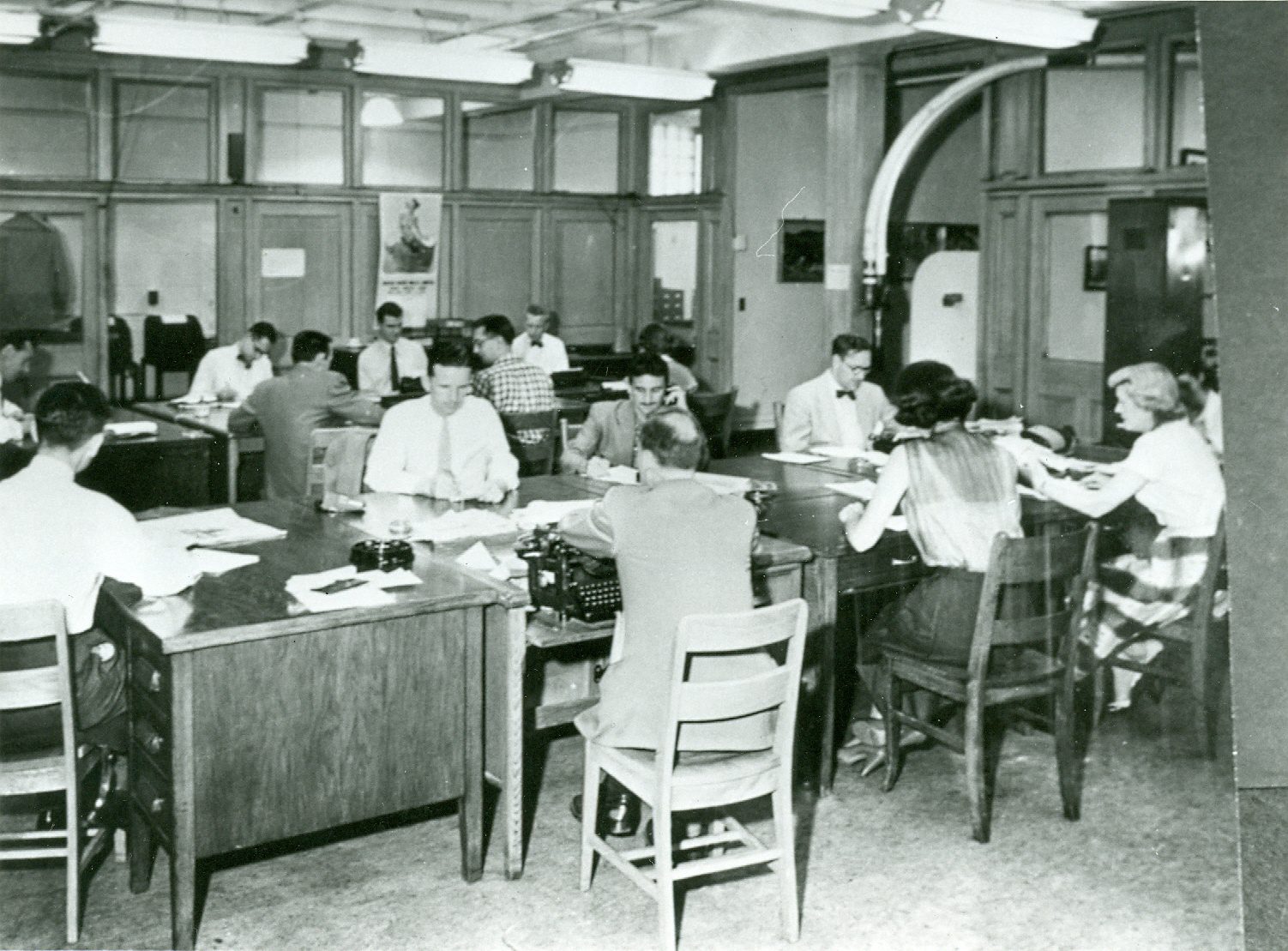

This early photo was taken in The Hamilton Spectator’s original building in downtown Hamilton. Photo courtesy of The Hamilton Spectator.
-
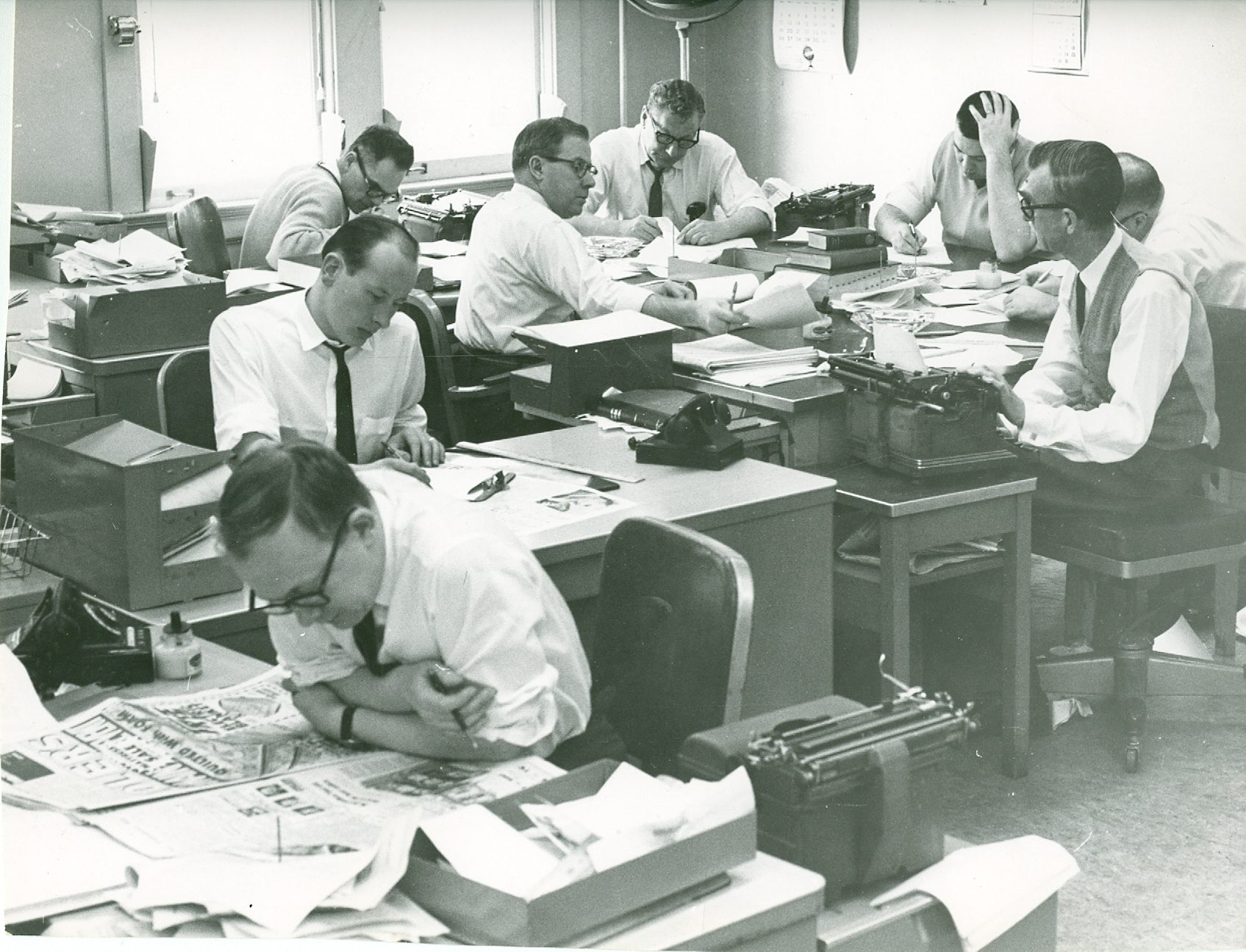

This early photo was taken in the Spectator’s original building in downtown Hamilton. Photo courtesy of The Hamilton Spectator.
-
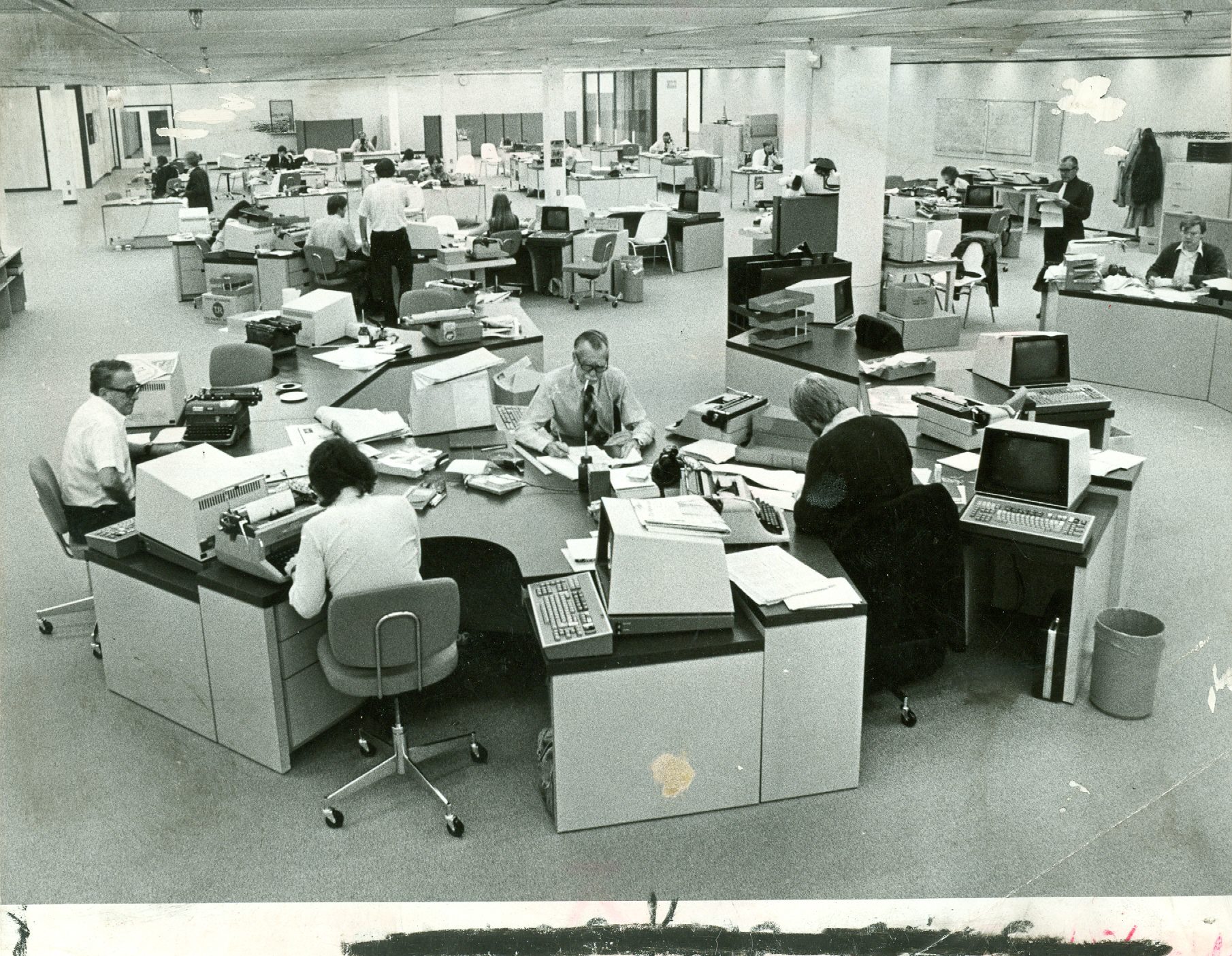

The Spectator later moved to a new office. In the 1970s, the newsroom featured piles of paper and huge pieces of machinery. Photo courtesy of The Hamilton Spectator.
-
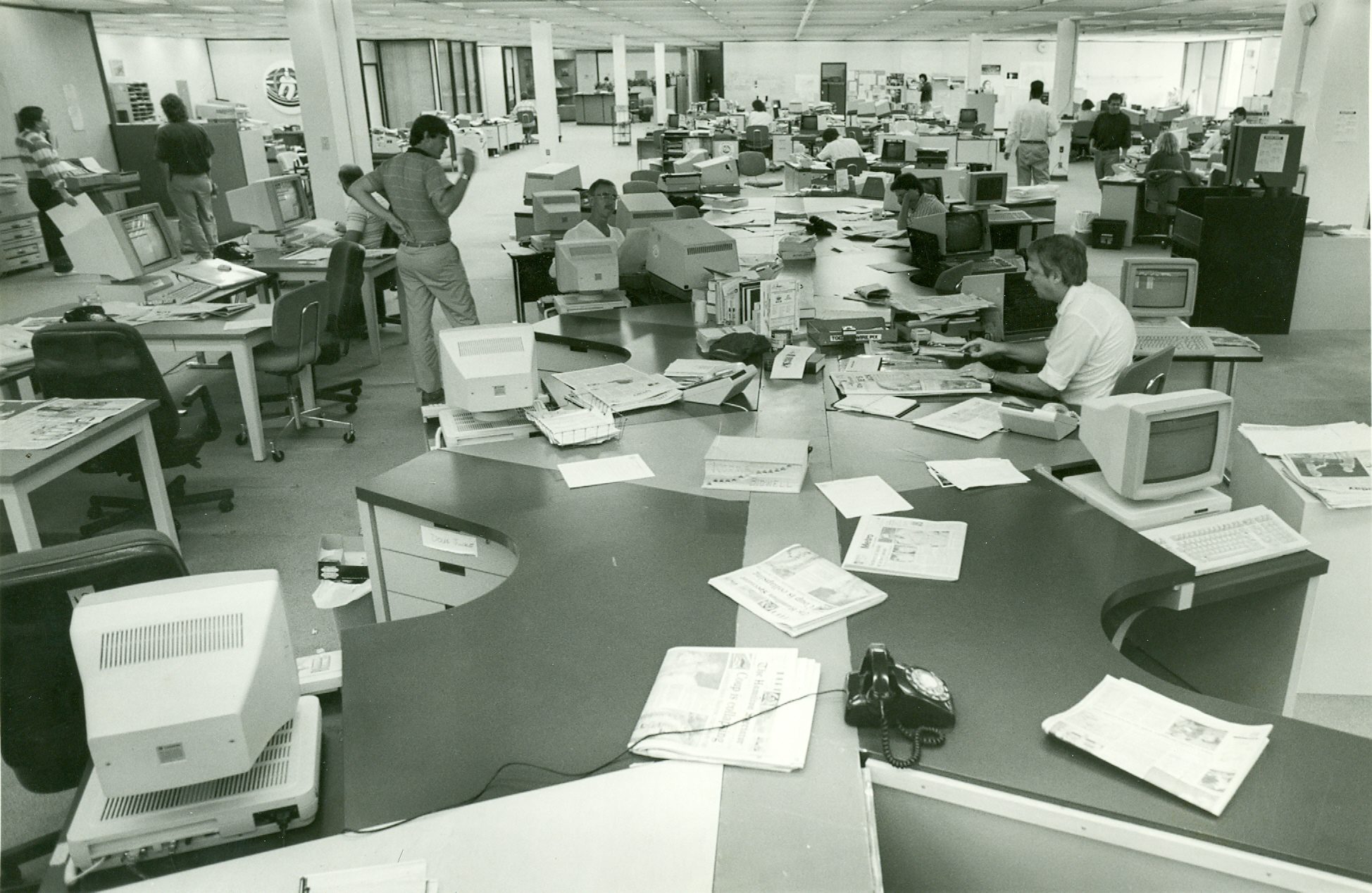

The Spectator later moved to a new office. In the 1970s, the newsroom featured piles of paper and huge pieces of machinery. Photo courtesy of The Hamilton Spectator.
-
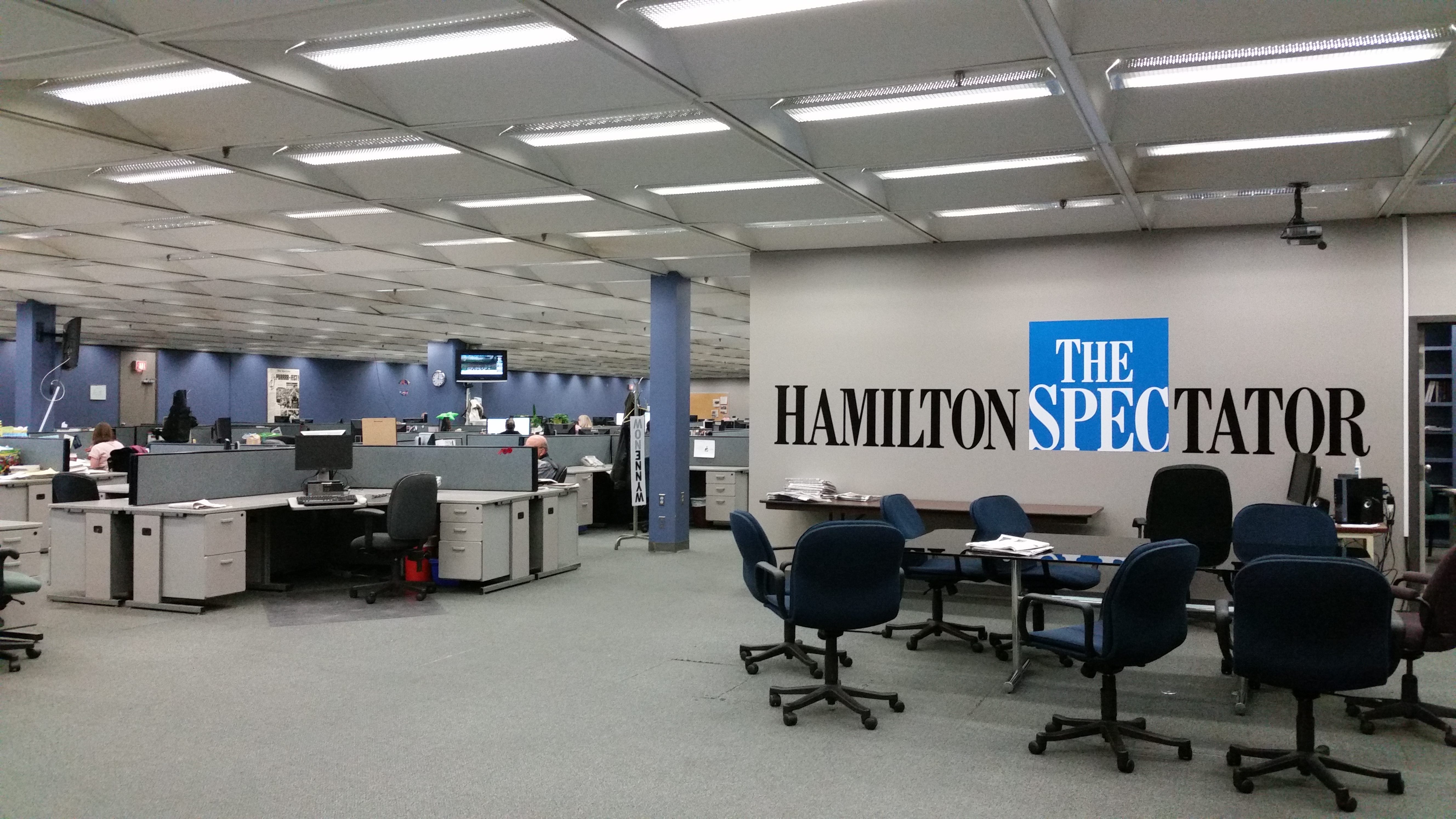

Today, the Spectator still runs from the same office it did in the ’70s, but the furniture, layout and technology has changed. Photo by Anda Zeng.
-
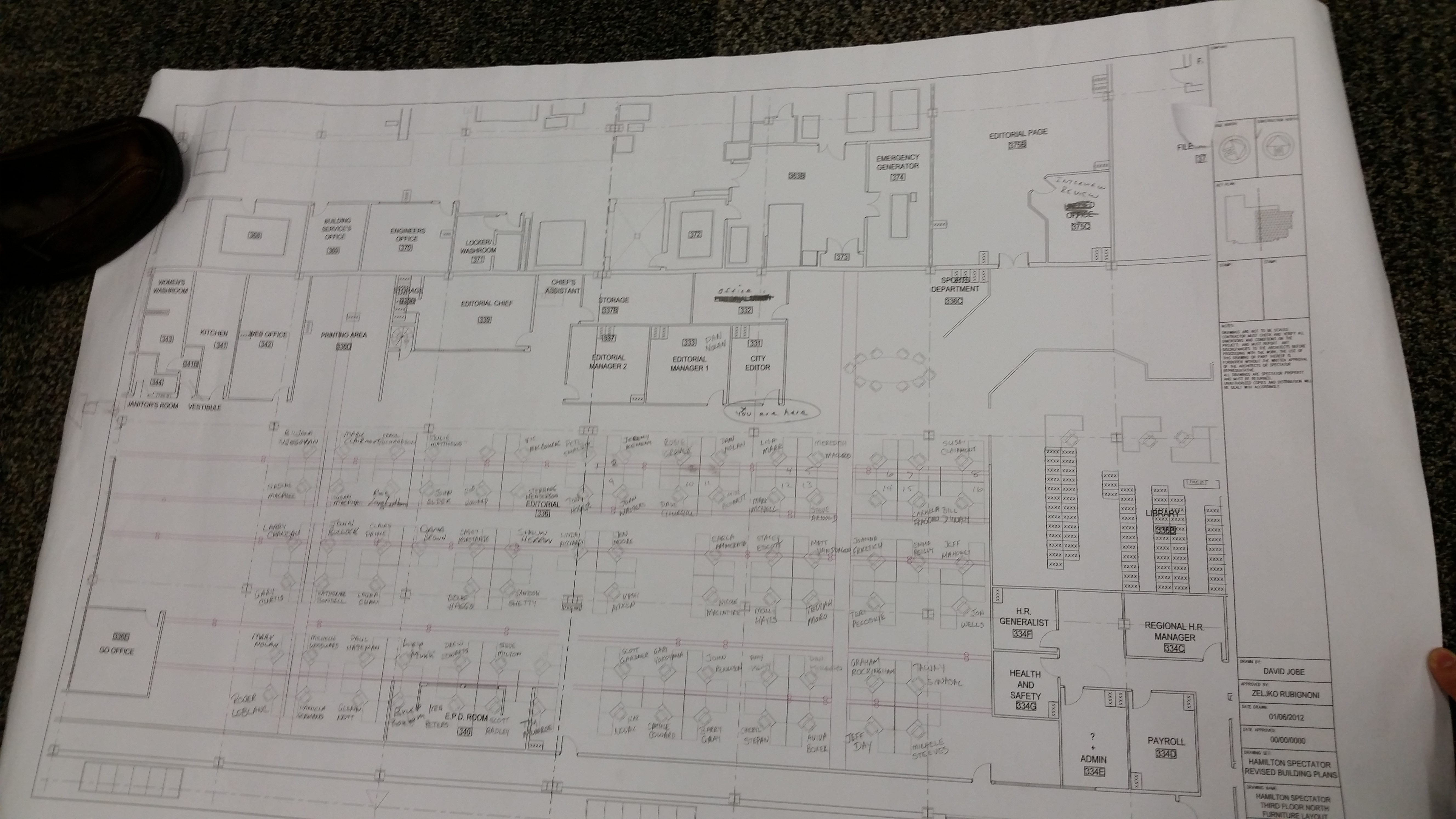

The latest redesign at the Spectator happened in 2014. These blueprints show some of the changes that happened that year. Photo by Anda Zeng.
-
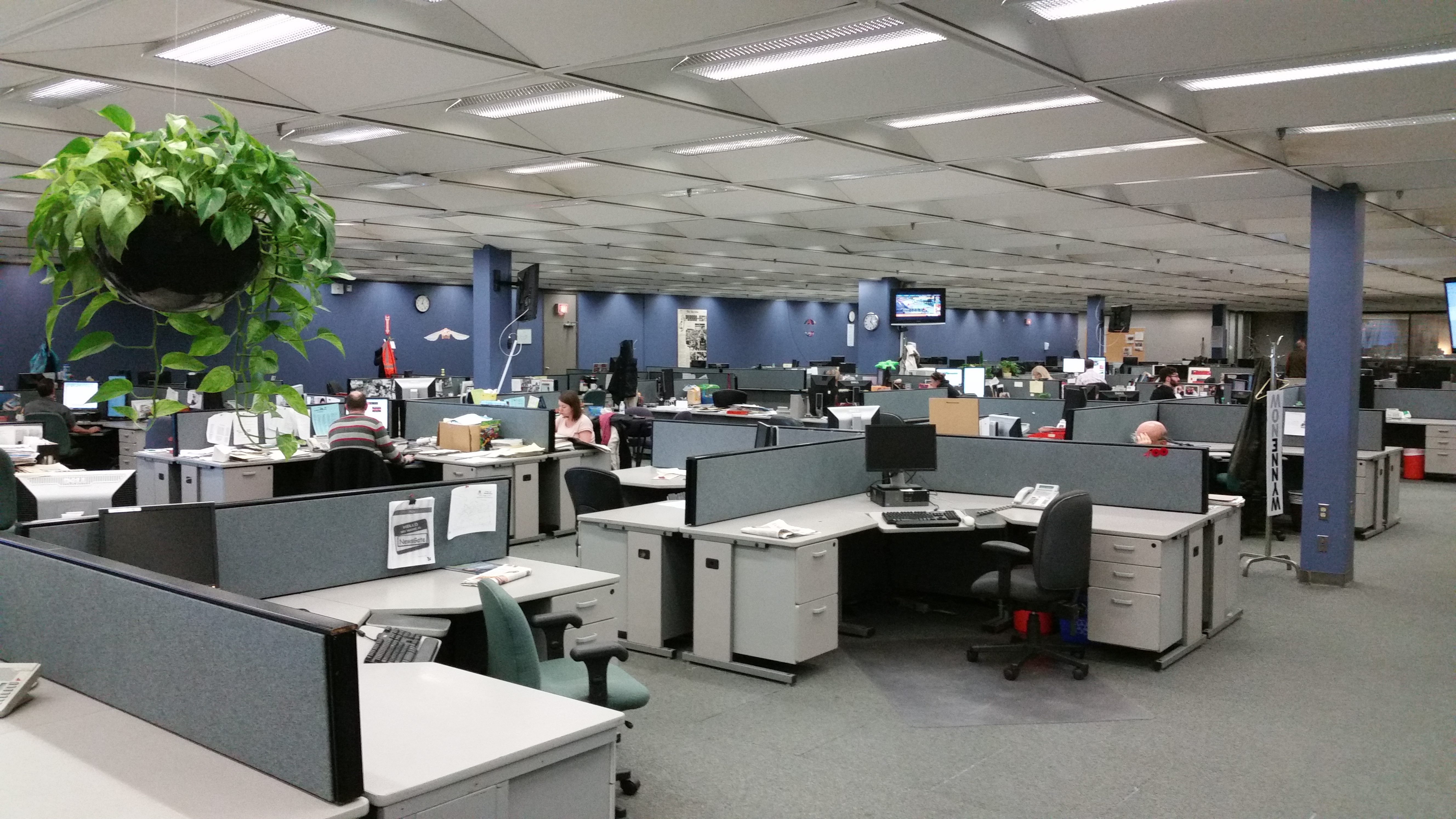

The Spectator’s open layout encourages collaboration. Story ideas sometimes come up from informal conversations that happen at the heart of the newsroom. Photo by Anda Zeng.
-
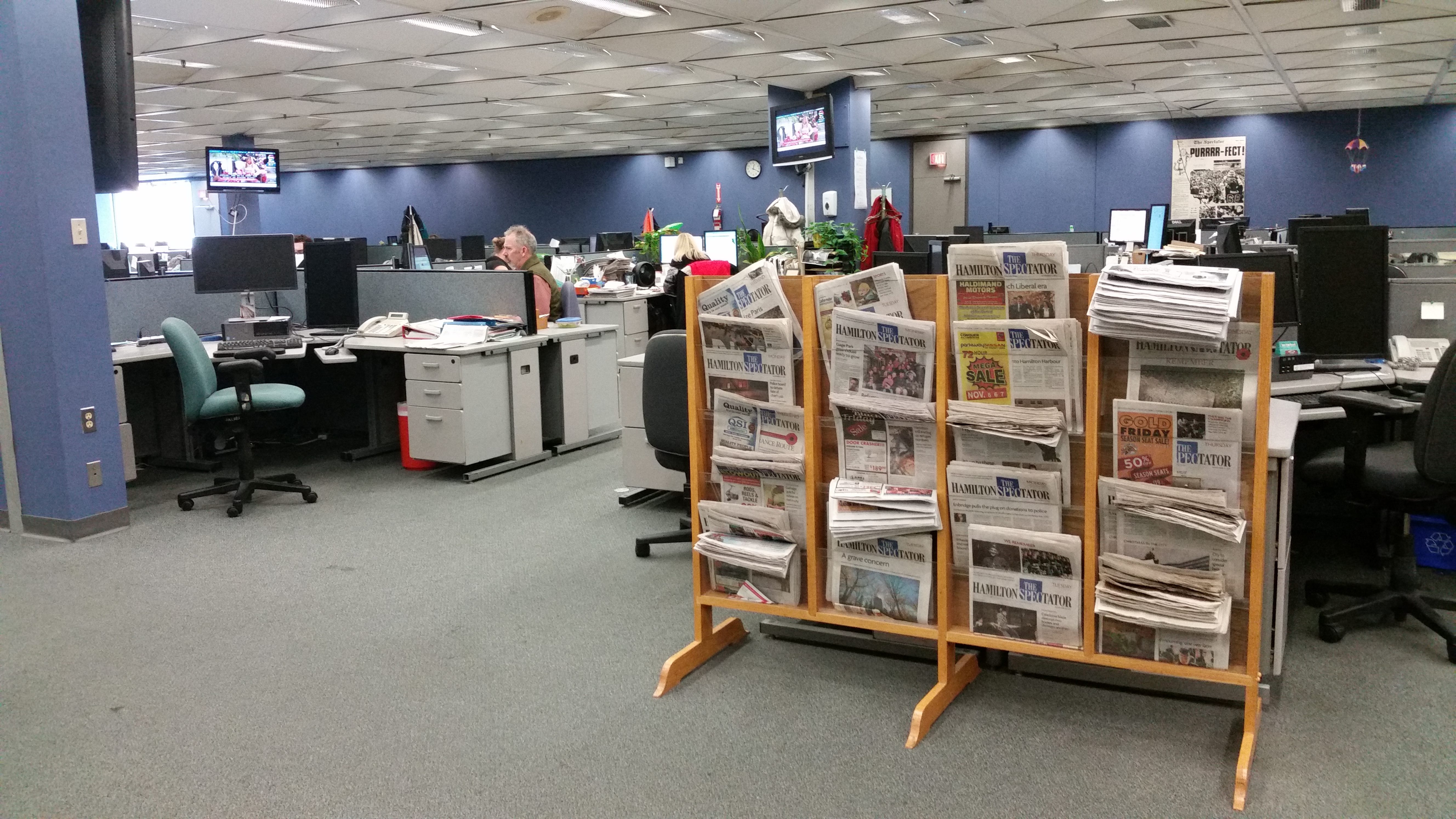

The Spectator’s open layout encourages collaboration. Story ideas sometimes come up from informal conversations that happen at the heart of the newsroom. Photo by Anda Zeng.
-
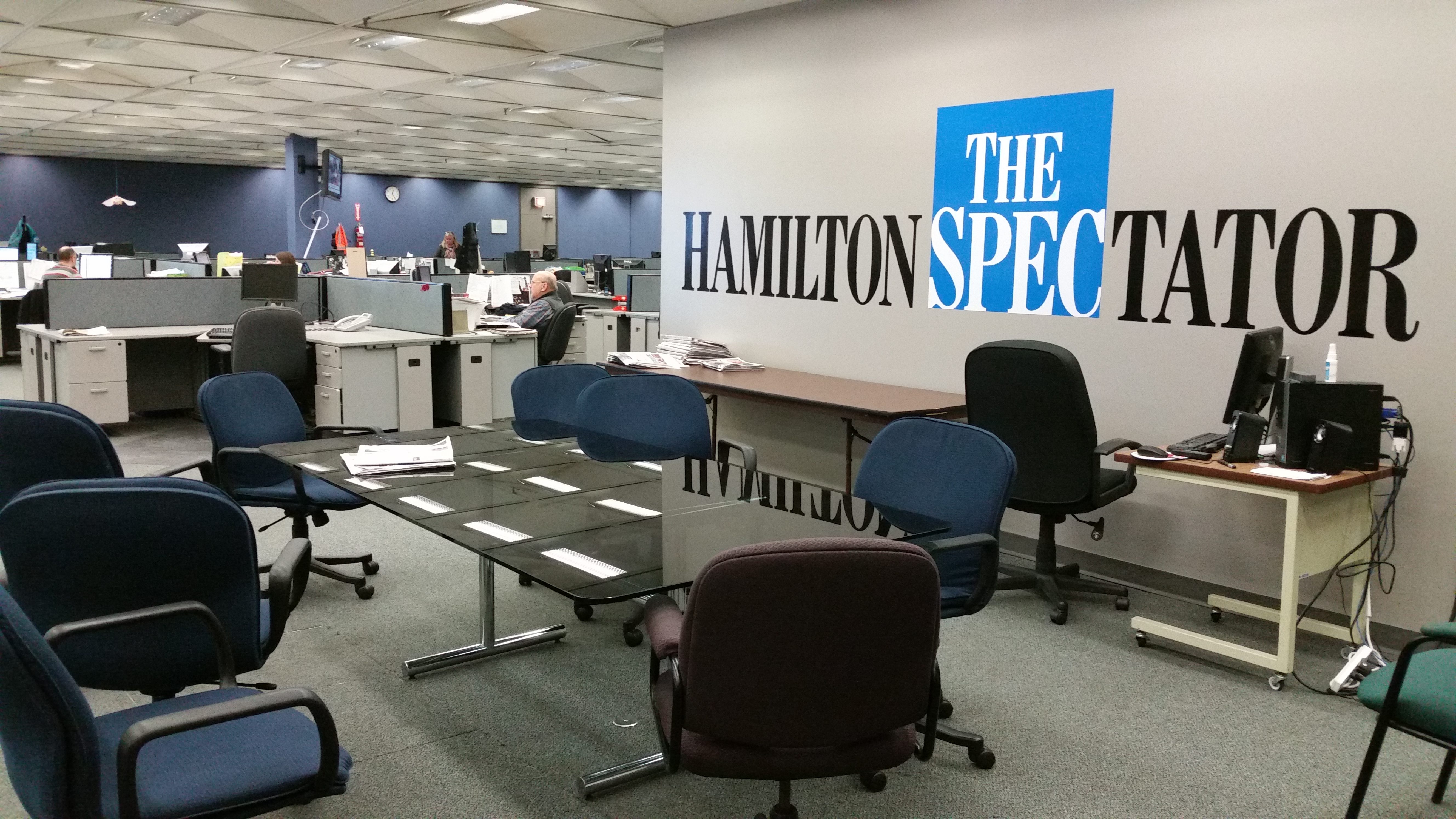

Even the Spec’s formal news meetings take place in the open, and everyone is invited to participate. Photo by Anda Zeng.





